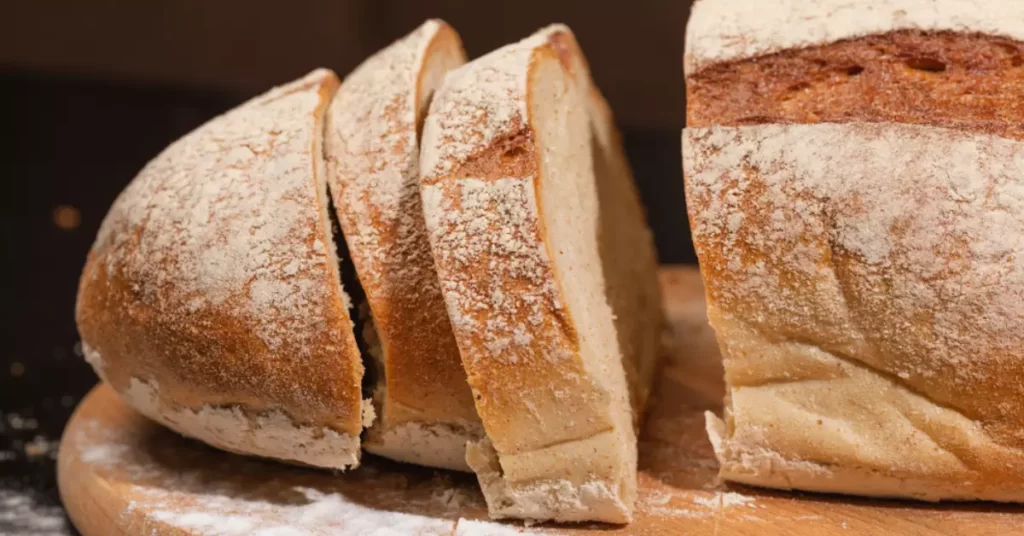The aroma of freshly baked bread wafting through the air is undeniably one of life’s simple pleasures. However, not all breads are created equal. Enter the world of yeast bread and quick bread, two popular categories of bread that differ in ingredients, preparation, and flavor.
Whether you’re a seasoned baker or a bread enthusiast, understanding the nuances between these bread types will enrich your baking experience and delight your taste buds.
Overview of Yeast Bread
Yeast bread is a type of bread that relies on the fermentation process of yeast to rise. Yeast is a living microorganism that converts sugar and starches in the dough into carbon dioxide gas and ethanol, causing the dough to expand and become light and airy.
The main ingredients of yeast bread include flour, water, yeast, and salt. Additional ingredients such as sugar, fats, and flavorings can be added to enhance the taste and texture.
The preparation of yeast bread involves kneading, proofing, and baking. Kneading helps to develop gluten, while proofing allows the yeast to ferment and the dough to rise.
Quick Bread and Leavening Agents
When it comes to quick bread, the magic lies in the use of chemical leavening agents like baking soda or baking powder. These agents are responsible for the rapid rising of the dough. Baking soda, a base, reacts with acidic ingredients commonly found in quick bread recipes (like buttermilk, yogurt, or lemon juice) to produce carbon dioxide gas.
This reaction causes the dough to rise quickly and gives quick bread its characteristic tender crumb. Baking powder, on the other hand, contains both an acid and a base, activating the rising process upon the addition of a liquid and again during baking. This dual-action ensures a consistent rise, making it a reliable choice for bakers.

Commonalities Between Yeast Bread and Quick Bread
While yeast bread and quick bread have their unique characteristics, they also share several similarities that are essential to the art of bread-making:
Fundamental Ingredients
Both types of bread primarily use flour, a liquid (like water or milk), and salt. These ingredients form the backbone of most bread recipes, providing the basic structure and taste.
Versatility in Flavors and Add-Ins
Both yeast and quick breads offer remarkable versatility. Bakers can incorporate various flavors and add-ins such as nuts, fruits, spices, and herbs to create diverse and delicious bread varieties.
Nutritional Value
Yeast and quick breads can be sources of essential nutrients, especially when made with whole grains. They can provide carbohydrates for energy, fiber for digestive health, and other vitamins and minerals depending on the ingredients used.
Cultural and Historical Significance
Bread, in all its forms, holds a significant place in many cultures and cuisines around the world. Both yeast and quick breads have evolved over time and continue to be staples in daily meals and culinary traditions.
Baking Process
Despite the differences in leavening agents and preparation times, both bread types ultimately require baking. This process transforms the dough into a flavorful, edible product with a desirable texture and aroma.
Home Cooking Appeal
Both yeast bread and quick bread are popular choices for home bakers. They offer the joy and satisfaction of creating something delicious and comforting from scratch.
Comparing Yeast Bread and Quick Bread
Similarities
- Flour: Both yeast and quick breads are traditionally made with all-purpose flour, but the world of flour is diverse and exciting. Bakers can experiment with whole wheat flour for a nuttier, more nutritious loaf, or rye flour for a distinctively tangy flavor. For those with gluten sensitivities, gluten-free flours made from rice, almond, or oat can be used. These alternative flours can significantly change the texture and flavor of the bread, offering a new dimension to your baking experiments. It’s important to note that when using different flours, especially in yeast bread, adjustments in liquid and kneading time may be necessary to achieve the perfect dough consistency.
- Leavening: Yeast bread and quick bread both require a leavening agent to help the dough rise, although the agents differ.
- Baking: Both breads are baked in an oven, typically at similar temperatures.
Differences
- Leavening Agent: Yeast bread uses yeast for fermentation, while quick bread relies on chemical leaveners like baking soda or baking powder.
- Preparation Time: Yeast bread requires a longer preparation time due to kneading and proofing, whereas quick bread can be prepared and baked in a shorter amount of time.
- Texture: Yeast bread usually has a chewy, elastic texture due to the gluten development, while quick bread is more tender and crumbly.
Comparison Table
| Aspect | Yeast Bread | Quick Bread |
|---|---|---|
| Leavening Agent | Yeast (fermentation) | Baking soda or baking powder (chemical reaction) |
| Preparation Time | Longer (kneading and proofing) | Shorter (quick mixing) |
| Texture | Chewy, elastic | Tender, crumbly |
| Flavor | Rich, complex | Mild, simple |
| Common Varieties | Sourdough, baguette, challah | Banana bread, muffins, scones |
Recipes to Try: Yeast Bread and Quick Bread
If you’re eager to try your hand at baking both yeast bread and quick bread, here are some classic recipes to get you started:
Yeast Bread: No-Knead Bread
- Combine 3 cups of all-purpose flour, 1/4 teaspoon of active dry yeast, 1 1/4 teaspoons of salt, and 1 1/2 cups of warm water in a bowl.
- Stir the ingredients until a shaggy dough forms.
- Cover the bowl with plastic wrap and let the dough rest at room temperature for 12 to 18 hours.
- Preheat your oven to 450°F (230°C) and place a covered Dutch oven inside for 30 minutes.
- Transfer the dough onto a well-floured surface and shape it into a ball.
- Carefully place the dough inside the heated Dutch oven, cover, and bake for 30 minutes.
- Remove the lid and bake for an additional 10 to 15 minutes, or until the crust is golden brown.
- Let the bread cool before slicing and serving.
Quick Bread: Classic Banana Bread
- Preheat your oven to 350°F (175°C) and grease a 9×5-inch loaf pan.
- In a bowl, combine 1 1/2 cups of all-purpose flour, 1 teaspoon of baking soda, and 1/2 teaspoon of salt.
- In another bowl, cream 1/2 cup of softened unsalted butter with 3/4 cup of granulated sugar.
- Mix in 2 large eggs, one at a time, followed by 1 teaspoon of vanilla extract.
- Stir in 1 1/2 cups of mashed ripe bananas and 1/2 cup of sour cream or plain yogurt.
- Gently fold the dry ingredients into the wet ingredients until just combined.
- Pour the batter into the prepared loaf pan and bake for 60 to 70 minutes, or until a toothpick inserted into the center comes out clean.
- Allow the bread to cool in the pan for 10 minutes before transferring it to a wire rack to cool completely.
Frequently Asked Questions
1. Can I substitute yeast for baking powder or baking soda in a recipe?
No, yeast cannot be directly substituted for baking powder or baking soda, as they serve different functions and react differently in recipes. Yeast requires time to ferment, while chemical leaveners act quickly and do not need fermentation.
2. How can I tell if my yeast is still active?
To test the activity of your yeast, dissolve a small amount in warm water with a pinch of sugar. If it foams and bubbles within 5-10 minutes, it is still active.
3. Can I make a quick bread recipe using gluten-free flour?
Yes, you can make a quick bread with gluten-free flour. However, you may need to adjust the recipe by adding additional binding agents like xanthan gum or guar gum to achieve the desired texture.
Final Thoughts
Yeast bread and quick bread each have their distinct characteristics and advantages, making them ideal for different occasions and preferences.
Yeast bread offers a complex flavor and a chewy texture, while quick bread provides a quick and tender alternative for those short on time or seeking a different texture.

I think that you should put what years and bread have in common.